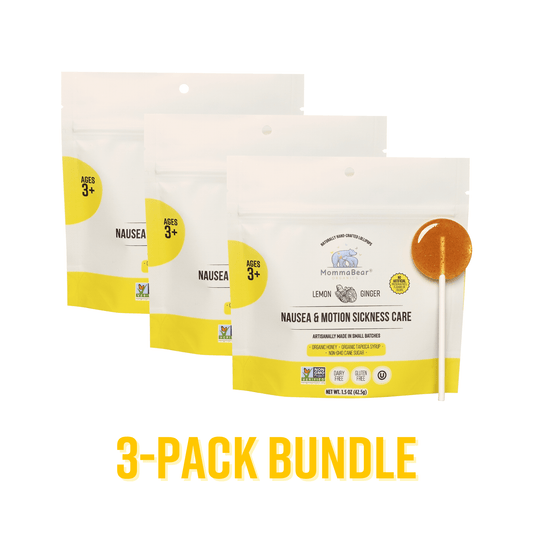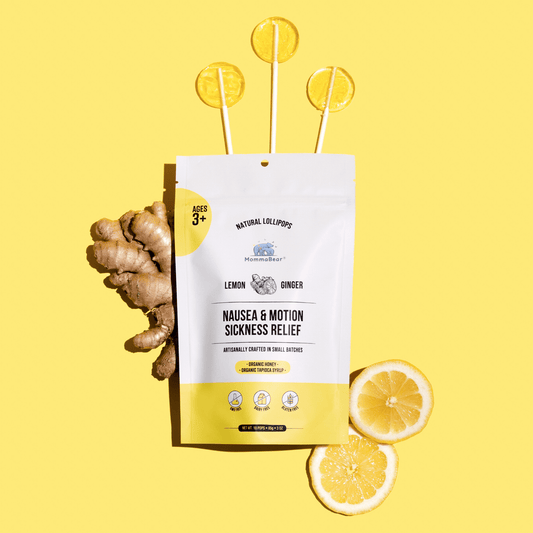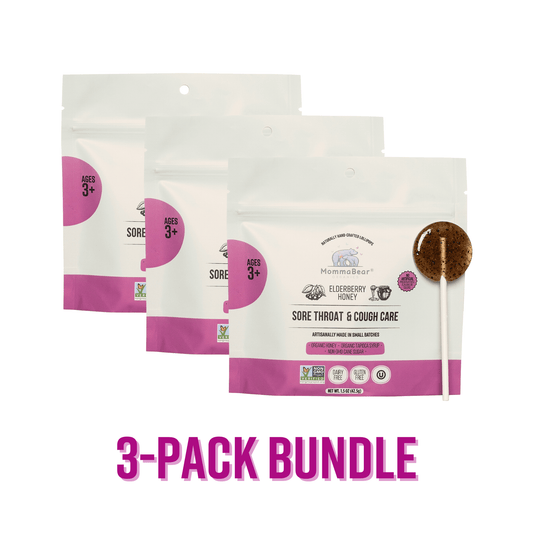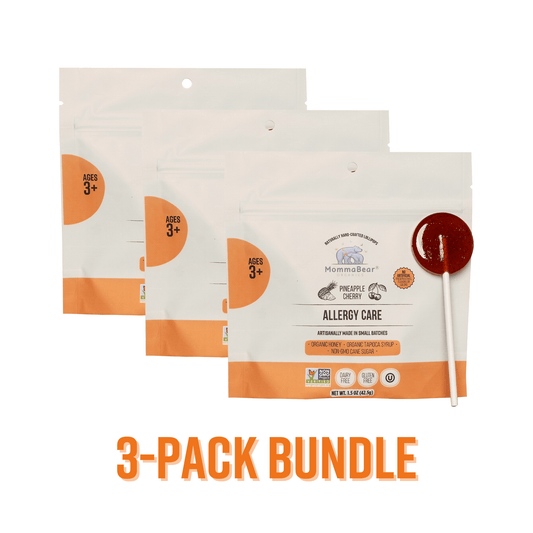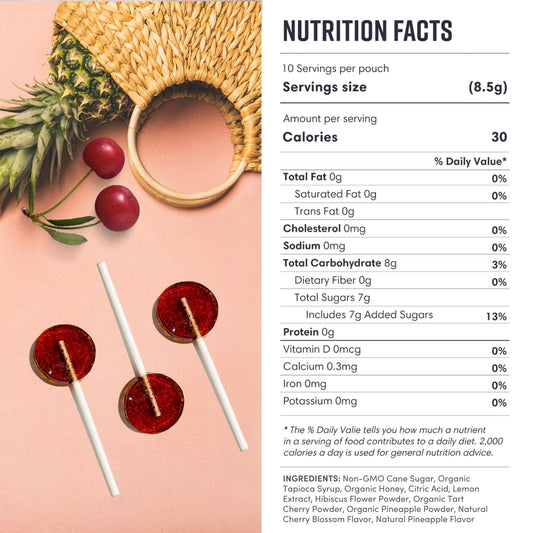Okay, so when it comes to picking stuff for my kids, my brain just goes into overdrive. It feels like a million things to worry about, right? Is this actually safe? Is that label telling the truth? And half the time I’m just standing in the aisle, completely overwhelmed. The one thing I’ve decided I can’t bend on, ever, is safety. It just has to come first.
I’ve kind of cobbled together my own little mental checklist over time, just to keep myself from short-circuiting.
-
Look for certifications: Choose products with clear labels like Organic, Non-GMO, Gluten-Free, or Dairy-Free.
-
Check ingredients: Avoid artificial additives, high fructose corn syrup, GMOs, and allergens. Opt for natural, organic components like raw wildflower honey.
-
Match to your child’s age: Follow age guidelines to ensure the product is safe and suitable for your child’s developmental stage.
-
Inspect manufacturing details: Prefer products made in the USA with small-batch production and strict quality controls.
-
Verify safety endorsements: Certifications like Parent Tested Parent Approved (PTPA) provide added confidence.
Quick Tip: And I have to add this, because it’s so important—I always, always run new things by our pediatrician. Especially since my little one has some allergies, it’s just not a corner I’m willing to cut. You know?
Non Toxic Baby Products From Target | Dr. Ana-Maria Temple ...
Core Safety Standards for Kids' Wellness Products
I’ll be honest, I used to just grab whatever had the cutest packaging. I really did. It wasn’t until I started to really stop and think about what goes into these products that things changed. It’s not about being a helicopter mom, I don’t think, it’s just… wanting to actually know what I’m giving them. Understanding some of these basic standards helped me feel like I was making a real choice, not just a wild guess.
Safety Requirements Explained
So this is the stuff I try to keep an eye out for now. It’s not like every product will tick every single box, but it’s a good guide.
-
Made in the USA: Products manufactured in the USA often follow strict quality controls.
-
Small Batch Production: Smaller batches can allow for better quality oversight.
-
Child-Specific Formulas: Ensure the product is designed specifically for children.
-
Clear Allergen Labeling: Allergens should be clearly marked on packaging.
"By adhering to organic standards, we ensure that our products are free from harmful pesticides, artificial additives, and genetically modified organisms (GMOs)." - MommaBear Organics
It really does feel like an extra chore sometimes, having to squint at the tiny print on the back of a package. But taking that extra minute to look for those little logos has become a habit, and it just makes me feel a little bit better.
Organic and Non-GMO Standards
Gosh, the whole ‘organic’ and ‘non-GMO’ world can feel so intense. The way I’ve simplified it in my own head is that it's just about trying to stick closer to nature and avoid the weird, extra junk. You know, the chemicals I can’t pronounce and the stuff that just doesn’t seem necessary.
This is the little breakdown I use to keep it all straight.
| Certification Type | What It Means | Why It Matters |
|---|---|---|
| Organic | No synthetic pesticides or fertilizers used | Reduces exposure to harmful chemicals |
| Non-GMO | No genetically modified ingredients | Ensures natural ingredient sourcing |
| Gluten-Free | Free from wheat and related proteins | Safe for gluten-sensitive children |
| Dairy-Free | Contains no milk products | Suitable for lactose-intolerant kids |
I read somewhere that the labels have gotten a lot easier to understand since last year, and it seems like a lot of other parents are feeling more confident because of it. I know I am. Just seeing things spelled out clearly makes a huge difference.
"Our organic lollipops are designed to be more than conventional sweets. They serve as a source of comfort, providing a moment of tranquility in today's hectic lifestyle." - MommaBear Organics
So yeah, those little certification seals are more than just decoration for me. They feel like a little nod that says, "Hey, someone else is checking this stuff too," which is a huge weight off my shoulders.
Steps to Verify Product Safety
So when I'm actually standing in the store, trying to decide, here's the little mental process I go through.
-
Look for Certification Logos: Check for official organic, non-GMO, or other relevant certification symbols.
-
Inspect Ingredient Lists: Confirm there are no artificial additives or potential allergens.
-
Review Manufacturing Details: Make sure production meets established safety and quality standards.
And I have to say, if I see something like that Parent Tested Parent Approved seal, it catches my eye. Knowing that other real parents have used it and said, "Yeah, this is good"—that means more to me than any fancy ad.
Reading Labels and Safety Certifications
Learning how to actually read a label has been a game-changer. It feels like I have a superpower now. At first it's like trying to read another language, but once you figure out what to look for, you feel so much more in control of what you're bringing into your house.
Safe vs. Unsafe Ingredients
It's really become about what's not in the product just as much as what is in it. I have a running list in my head of the good stuff and the "absolutely not" stuff.
Ingredients to Look For:
- Certified organic natural sweeteners
- Natural ingredients
- Organic-certified components
- Naturally derived flavors
Ingredients to Avoid:
- High fructose corn syrup
- Artificial sweeteners
- GMO ingredients
- Gluten
- Dairy
"Our lollipops and suckers are made with organic raw wildflower honey - a natural sweetener with antibacterial properties that supports wellness. Free from GMOs, gluten, dairy, high fructose corn syrup, and artificial sweeteners, our products are gentle on the body and perfect for kids and adults alike." - MommaBear Organics
So I do a quick scan of the ingredients, and then I look for those certifications. It's like my own little two-step safety check.
Common Safety Certifications
Seeing the little logos is great, but I got curious about what they all really mean. So I made myself a little cheat sheet.
| Certification Type | Verification Process | What It Ensures |
|---|---|---|
| Organic | Third-party inspection and testing | No synthetic pesticides or harmful chemicals |
| Non-GMO | DNA testing and supply chain checks | Free from genetically modified ingredients |
| PTPA (Parent Tested Parent Approved) | Real parent testing | Safe and effective for families |
| Kosher | Religious authority inspection | Meets specific dietary and preparation standards |
And if you're ever feeling really unsure about a product, you can totally double-check this stuff online. I've done it before when something just didn't feel right.
- Look for official logos on the packaging
- Verify details with the certifying organization
- Check for expiration dates
- Use certification numbers if provided
"Parental endorsement is crucial in the world of family-oriented products. Parents are always seeking the best for their children, especially when it comes to health and wellness. A recommendation from PTPA serves as a powerful vote of confidence, assuring parents that our lollipops are not only delicious but also safe and beneficial for their children." - MommaBearUSA.com
Matching Products to Your Child's Age
This one seems so obvious, but man, it's easy to get wrong. I've caught myself almost grabbing something out of habit, forgetting that what's fine for my oldest is a definite no-go for the little one. Their bodies just handle things so differently at each stage, it's wild.
Age Guidelines and Safety
I try to keep this little chart in my mind, depending on which kid I'm shopping for.
| Age Group | Key Safety Considerations | Monitor Closely |
|---|---|---|
| Under 3 years | Avoid most wellness supplements | Watch for choking hazards and sensitivities |
| 3-6 years | Use small serving sizes; supervise use | Opt for easy-to-consume formats and clear ingredients |
| 7-12 years | Stick to age-appropriate servings | Look for natural ingredients and clear instructions |
| Teens | May use adult serving sizes | Ensure formulations are suitable for their age |
Parent Safety Checklist
So before anything actually goes into the shopping cart, I do one last mental pass.
- Check the label to confirm it's suitable for their age.
- Follow serving instructions exactly as directed.
- Review ingredients to ensure they're safe and free of allergens.
"Designed for busy families, MommaBear Organics lollipops are portable and safe for ages 3+, making them ideal for home, travel, or lunchboxes. As a women-owned brand, we're proud to blend tradition with innovation, creating tasty, organic solutions for your loved ones' wellness." - MommaBear Organics
Keep Track and Store Safely
When we do try something new, I try to pay close attention for the first couple of days. I'm not super formal about it, but I’ll make a quick note in my phone or something.
-
The date you started using it
-
Any reactions your child experiences
-
How effective the product is
-
How easy it is to use
And of course, storage. Everything goes on the highest shelf in the pantry, no exceptions. It’s just one of those things you can never be too careful about. All these little things, they add up, but they really do help me feel like I’m on top of it.
sbb-itb-e1a023f
Safety Analysis Guide
There are times when I'm standing there, holding two different products, trying to figure out which one is the lesser of two evils, or the better of two goods. It's confusing. I’ve found that having a consistent way to compare them helps cut through all the flashy marketing words.
Product Safety Comparison Chart
| Safety Factor | What to Look For | Red Flags |
|---|---|---|
| Ingredients | Natural, organic components; raw wildflower honey; clearly labeled ingredients | Artificial sweeteners; high fructose corn syrup; vague ingredient lists |
| Manufacturing | Made in the USA; small-batch production; strong quality control processes | Unclear manufacturing location; mass production with no quality checks |
| Certifications | Organic, Non-GMO, Gluten-Free, Dairy-Free, Kosher certifications | Missing or unclear certifications |
| Age Rating | Clear age guidelines (e.g., 3+ years) | No age specifications; inappropriate for listed ages |
| Third-Party Validation | Recognition from trusted groups like PTPA | No independent testing or endorsements |
| Allergen Information | Clear allergen declarations; "free-from" statements | Hidden or ambiguous allergen details |
How to Use This Framework
For me, it really boils down to a few simple things. Ingredient Transparency is huge—I just want the company to be straight with me about what’s in there. No secrets. Then, Production Standards. I don’t know, I just feel better about things made in smaller batches. It feels like someone is actually paying attention. And finally, Expert Validation. If other parents or a group I trust has said it’s okay, that carries a lot of weight.
So if I'm really looking into a new brand, here's the info I try to hunt down:
-
Production location and quality control measures
-
Complete ingredient list
-
Current certifications, including expiration dates
-
Age guidelines
-
Any reported reactions or issues
You just have to look past the pretty promises on the front of the box and do a little digging. It's the only way to feel sure.
Starting New Wellness Products
Safety Steps for New Products
So you did all the research, you bought the thing, and now it’s sitting on your counter. The introduction phase always makes me a little nervous, so I try to take it slow.
Consult a Pediatrician
First stop, always, is a quick call or message to our doctor. I mean, they have the full picture of my kid’s health, all the little notes and history. It takes five minutes and it just feels like the most responsible thing to do.
Test with Care
Then, we start small. I mean, really small. Like a tiny taste or a half-dose the first time. And then I just watch my kid like a hawk. I look for anything—a weird rash, a tummy ache, even just being grumpier than usual. You know your kid better than anyone, so you’ll know if something is off.
Keep Detailed Notes
I’m not saying you need a color-coded binder here, but I do try to jot down a quick note in my phone. Just something like:
-
When the product was introduced
-
How much was used
-
Any reactions observed
-
Other factors that might have influenced the outcome
MommaBear Organics Safety Features
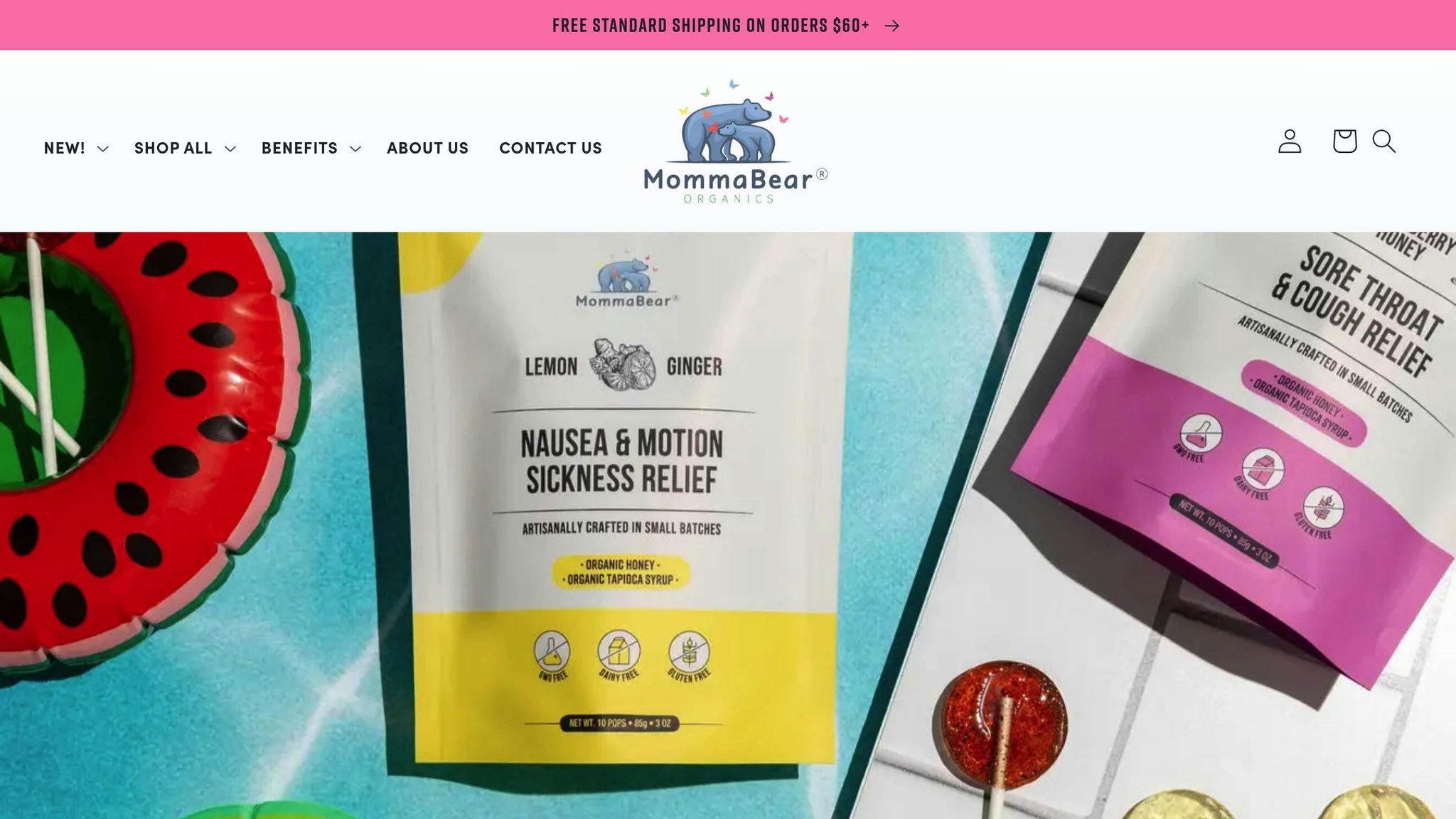
This is where some brands just make you feel… seen. They seem to already be doing all the cautious things I would do, which just makes my life so much easier.
High-Quality Production
I just love that their things are handcrafted in small batches in the USA. It doesn’t feel like it’s coming off some massive, anonymous factory line. It feels like there’s more care involved.
Safe, Simple Ingredients
And the simple ingredients list is everything. When I see things I actually recognize, like raw honey, I can breathe a little easier. It’s that kind of stuff that gives a mom some peace of mind in a world of complicated choices.
Key Safety Points
If I had to boil all this down, it would be this: just stick to the products with clear, simple labels. The ones that aren’t full of junk like high fructose corn syrup and artificial everything. It just feels gentler on their little bodies, and honestly, it’s gentler on my worried mind.
And things like that PTPA (Parent Tested Parent Approved) seal, I really do look for that. It means a product has passed the test with other families, and that feels real to me.
"Our lollipops and suckers are made with organic raw wildflower honey - a natural sweetener with antibacterial properties that supports wellness. Free from GMOs, gluten, dairy, high fructose corn syrup, and artificial sweeteners, our products are gentle on the body and perfect for kids and adults alike."
This is kind of my final mental checklist when I’m weighing my options:
| Safety Factor | Why It Matters |
|---|---|
| Age Rating | Ensures the product is suitable for children of specific ages. |
| Manufacturing Location | Products made in the USA often adhere to strict quality controls. |
| Organic Certification | Verifies the use of pure, natural ingredients. |
| Natural Ingredients | Offers gentle support for overall wellness. |
And I know I sound like a broken record, but I’ll say it one more time: checking with a doctor before you start anything new is never a bad idea. Especially if your kid has any kind of health issues or allergies.
FAQs
How can I make sure safety certifications on kids' wellness products are genuine?
Oh, that’s a good question. It’s easy to get cynical and wonder if those logos are even real. What I usually do is stick to the big, reputable ones, like the USDA Organic seal. You get used to what they look like. If I’m ever really suspicious about a new brand, I’ve literally gone to the certifying organization's website. A lot of them let you search for certified companies. It’s a little extra work, but hey, it’s for your kids.
What are the benefits of using organic and non-GMO wellness products for my child?
For me, it’s just about reducing their exposure to… stuff. All the synthetic pesticides and weird chemicals. It just feels cleaner. Plus, organic and non-GMO products often leave out the common junk like allergens, high fructose corn syrup, and artificial sweeteners. It just feels like a more natural, gentle way to support their health. It’s about giving them something simple and good.
How can I tell if a wellness product is safe and suitable for my child’s age?
First place I look, every single time, is the age recommendation on the package. It's there for a reason, you know? Like how MommaBear Organics says their lollipops are for kids 3 and up—that’s a clear guideline. After I check the age, I scan the ingredients for any of our personal no-go allergens. And then I do a quick look for those certifications, like organic or non-GMO. It's my little three-step check to make sure I feel good about it.
I don’t know. Some days I feel like I’ve got this parenting thing down, and other days I’m just staring at a shelf, completely lost. It’s not really about being perfect, is it? It’s just about trying, and learning, and trusting your gut. We’re all just doing the best we can for our little people. And I guess that has to be enough.


